There’s no doubt about it –– remote and hybrid work environments are here to stay. As Loom CEO Joe Thomas stresses, “Flexibility is the future.” Flexibility means freedom to work where and how you wish. Yet, despite the big step forward in providing work flexibility, there is also a sharp increase in burnout. 85% of workers say that work stress is greater now than it was five years ago, and 60% report a significant increase in the frequency of meetings.
In this special SaaStr Annual presentation, Thomas shares how async communication improves the work experience, enhances company culture, and builds a better business.
What is Async, and Why is It Important?
To understand async (asynchronous) communication, it’s important to first define its opposite; synchronous communication.
Sync (Synchronous) Communication: This is real-time communication, where two or more people are engaging simultaneously. This method is best for bursty communication and culture-building. Examples of sync include in-person meetings, Zoom calls, and phone calls.
Async (Asynchronous) Communication: Thomas describes async as communication that “is not happening in real-time. Someone is documenting something, sending it to someone else, then it’s consumed with a lag time in between.” Essentially, it’s a style of work that allows responses to be completed in a time frame that works for each employee. Async enables work to get done whenever, wherever. This communication style works best for deep work and information dissemination. Examples of async include Trello, Loom, and Notion.
Note: Some communication tools and methods can operate as both sync and async, including SMS messaging, Figma, and Slack.
To illustrate how successful async adoption can be, Thomas highlighted four async success stories from real brands, and how async improved their business.
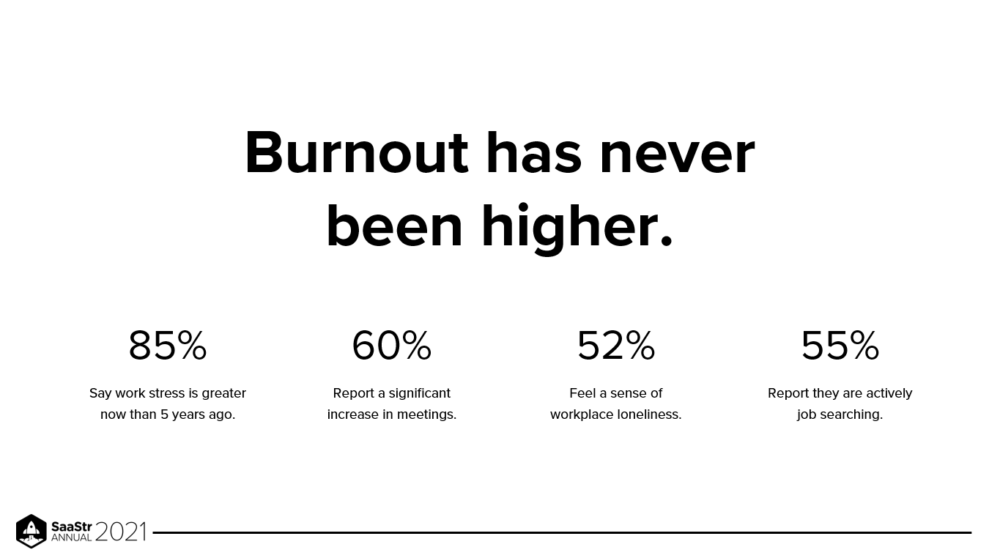
GitLab: Creating a Standout Async Employee Experience
GitLab is one of the world’s largest all-remote companies, with 1400+ employees around the globe. They’ve used async to empower their teams to live and work where they’re most fulfilled.
A snippet from the GitLab handbook that describes their async method reads, “How would I deliver this message, present this work, or move this project forward right now if no one else on my team or in my company were awake?”
A few best practices that GitLab employs are as follows:
- Share Knowledge (Example: GitLab’s handbook is open-source.)
- Communicate Publicly.
- Clarify What Needs to be Synchronous.
- Challenge Existing Norms and Assumptions. (Example: GitLab encourages employees to suggest async over sync if they feel it would serve everyone better.)
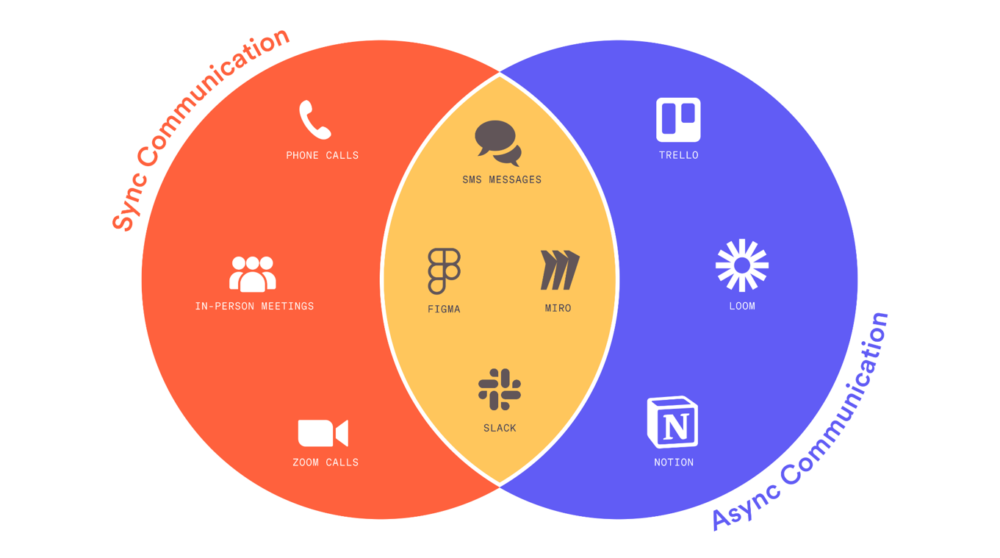
Figma: Building World-Class Products Async
It can be challenging to build a great product while working remotely, but Figma was able to do so. They launched the public beta of FigJam in just six months during the pandemic. So how did they do it?
Enabling async product feedback was one key to accomplishing this. Async accelerated their feedback and ensured that all voices were heard. They created a public #figjam-feedback slack channel so that multiple departments could contribute and be represented equally and quickly.
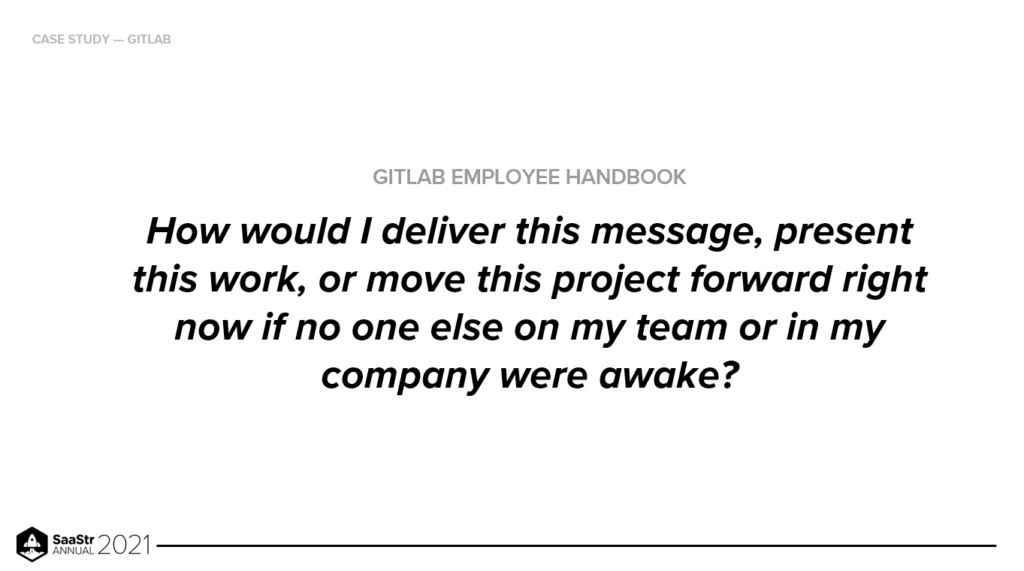
Loom: Hiring Teams Async
“A huge benefit of hiring talent from a remote-first perspective is that we get to tap into a global talent pool from the earliest days,” says Thomas. Loom has spent time improving their hiring with async, with pretty impressive results: The company has a 93% satisfaction rate for their interview process. Here’s how they do it.
Loom uses async video throughout its recruiting and interview experience to connect with candidates in a very personal way while offering a window into what work life is like at Loom. The candidates are also asked to use async videos to create and present on their own terms. Loom leadership believes the async format offers the clearest view of a candidate’s work and skills. The async video leads to 50% higher pass-through rates.
Finally, the async video allows relationship-building and connection throughout recruitment. For example, Loom sends out “welcome” or “congratulations” videos for prospective talent to get to know the company better.
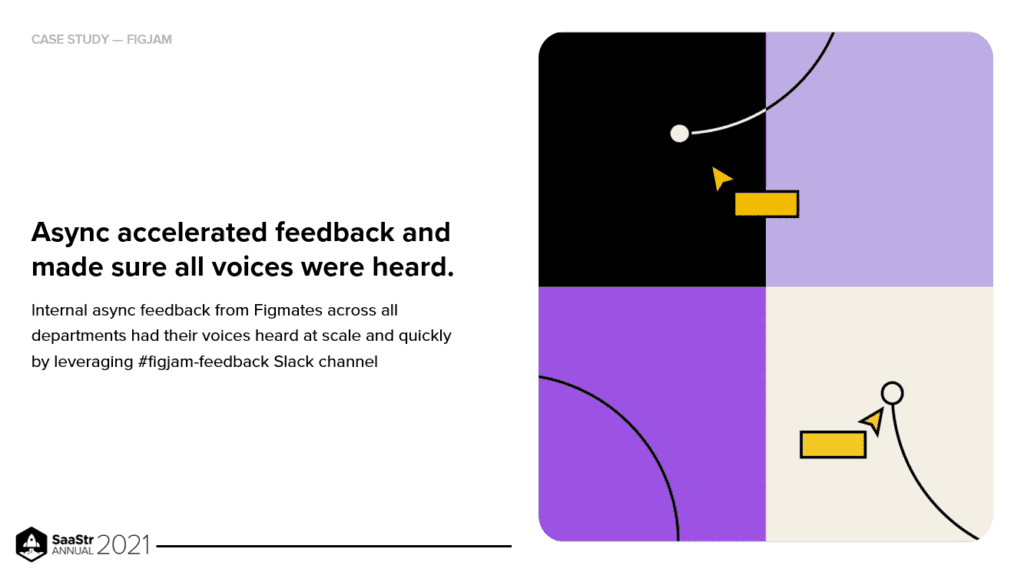
Upwork: Scaling Async Collaboration
Upwork helps connect freelancers and clients, but their marketplace didn’t operate optimally with live meetings and other sync tools in the early days. 21% of phone calls were never completed, and 57% of clients that tried video conferencing only did it once. The trend that they noticed was that synchronous tools simply didn’t work as well as asynchronous communication.
They decided to realign themselves to be more asynchronous, so they created async content and tools for freelancers and clients for every step of their working process. This shift led to faster completion of complex projects and decreased meetings. The companies that can confidently leverage the freelancer workforce with fewer meetings, clearer communication, and quicker project completion will win –– and they’ll do it async.
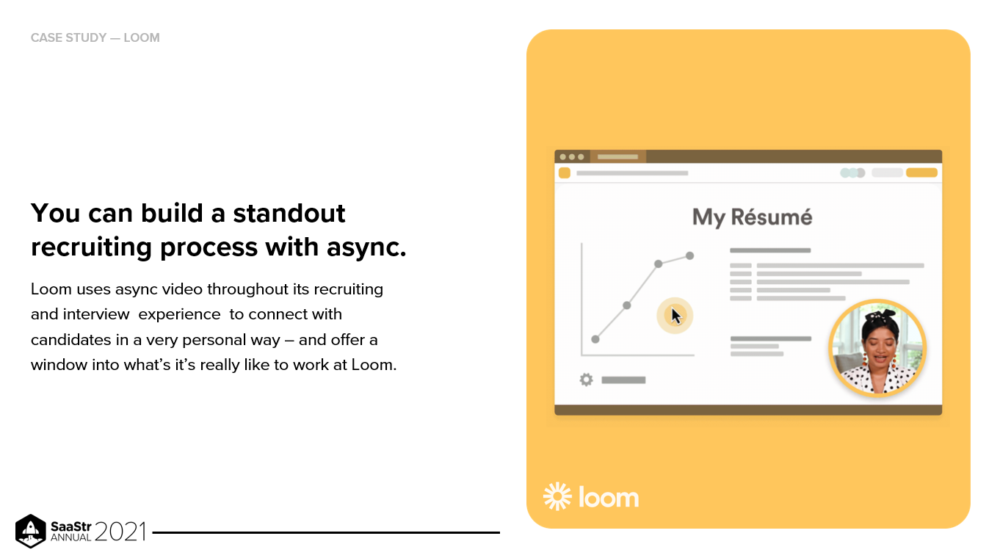
Key Takeaways
- Working with async means that teams have time for deep, focused, and fulfilling work.
- Async gives individuals more time back and empowers them to be seen and heard.
- Organizations that adopt async communication are more transparent and human.
The post 4 Ways to Get to $10 Billion by Working Async (Without Burning Out) with Loom CEO Joe Thomas (Pod 531 + Video) appeared first on SaaStr.
via https://www.aiupnow.com
Amanda Beaty, Khareem Sudlow
